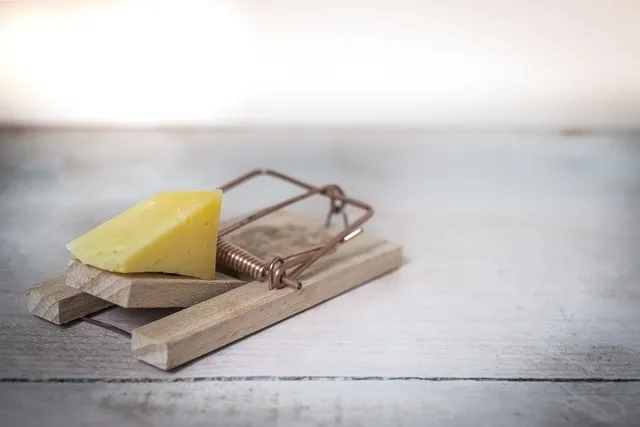Catching a rat might not be a walk in the park, but when these little troublemakers invade your space, it’s time to roll up your sleeves and take action. Rats and mice can be a real nuisance in your home, from spreading waste to chewing through things you hold dear.
We understand the frustration of dealing with these uninvited guests, and that’s why we’ve put together a comprehensive guide on the best ways to tackle this issue effectively. From tried-and-true traps to tips on creating a rat-free environment, our blog tells you everything you need to know about the best way to catch a rat.
Rat Trapping Essentials
Before you break out the rat traps, remember that you’re dealing with a worthy opponent. Rats have an acute sense of smell, taste, and hearing, making them quite elusive when avoiding traps.
Their agility and ability to squeeze through tiny openings add to the challenge. To catch a rat effectively, you’ll need to gather the right tools and materials. Here’s a list of essentials to get you started:
- Traps: There are various types of rat traps available, including snap traps, glue traps, electronic traps, and live traps. Each has its advantages and disadvantages. Choose the one that best suits your needs and preferences.
- Bait: Rats are attracted to different types of bait, including peanut butter, cheese, bacon, or even small bits of dried fruit. Experiment with a few options to see what works best for you and what will be the best way to catch the rat on your property.
- Gloves: Always use gloves when handling traps and bait to minimize human scent transfer, which might deter the rats from approaching.
- Sealing Materials: To prevent rats from re-entering your space, seal any gaps or holes around your home with steel wool, caulk, or wire mesh.
Strategic Placement of Traps
Rats tend to follow specific paths along walls and baseboards. They are cautious creatures, so they often stick to the edges of rooms, making these areas prime locations for trap placement.
When positioning your traps, consider the following tips:
- Know Your Rat: Observe the rat’s behavior and paths, if you can, to identify the most active areas. Common signs include droppings and gnawed objects.
- Use Multiple Traps: Set multiple traps in these high-activity areas. Rats are social animals, and if one rat is caught, others may be more inclined to investigate the same area.
- Place Traps Along Walls: Position your traps with the trigger end along the wall. Rats are more likely to run along walls, increasing your chances of success.
- Maintain a Rat-Friendly Environment: Rats are neophobic, meaning they’re wary of new objects in their environment. Allow them to become accustomed to the traps by leaving them unset for a few days with bait. This will make the traps seem less suspicious when you do set them.
Best Way to Catch a Rat With Traps
Now, let’s explore the different types of rat traps and their advantages:
- Snap Traps: Snap traps are a classic choice. They consist of a wooden or plastic base with a spring-loaded mechanism. When the rat takes the bait, it triggers the trap, snapping shut and instantly killing the rodent. Snap traps are affordable and efficient, and some options even make disposal easy to avoid accidental contamination.
- Glue Traps: Glue traps capture rats by immobilizing them when they come into contact with the adhesive surface. However, homeowners need to be aware that glue traps can pose some challenges. Once caught, you’ll have to deal with a live rat, something no one wants to handle! Plus, these traps aren’t selective and can unintentionally catch other animals, including your pets. We suggest instead relying on a pest professional instead of these options.
- Electronic Traps: Electric traps provide a fast way to deal with rodents. When a rat enters the trap to get at the bait, it triggers an electrical circuit, delivering a quick, lethal shock. These traps do the job efficiently, but they are more expensive than traditional options.
- Live Traps: Live traps capture rats alive; however, we don’t recommend using these for your rodent exclusion plan. This isn’t the best way to catch a rat, as you’ll have to get rid of it or release it back into your yard. Leave these traps to the professionals!
The choice of trap depends on your preferences and the level of infestation. But don’t worry if the options are overwhelming. Our team at Absolute Pest Control can handle any rat problem for you!
Baiting the Traps
Now that your traps are set up, it’s time to bait them. Bait is a critical element of rat trapping because it lures the rodent in. Here are some tips for successful baiting:
- Use Fresh Bait: Rats have a keen sense of smell, so fresh bait is essential. Replace it regularly to keep it enticing.
- Secure the Bait: Use a small amount of bait and secure it to the trap’s trigger with dental floss or thread. This makes it more difficult for the rat to steal the bait without setting off the trap.
- Be Consistent: Stick to one type of bait until you catch a rat. Rats are cautious and might be deterred by changes in scent.
- Experiment: If one bait doesn’t work, don’t be afraid to experiment with other options. Peanut butter is a popular choice, but rats can have individual preferences.
Now that your traps are set and baited, you’re well on your way to catching that elusive rat.
Part 6: What to Do After Catching a Rat
Congratulations, you’ve chosen the best way to catch a rat and trap one inside your chosen product. But now what?
The process doesn’t end here. Now, you have to decide your next steps. Here are some considerations to follow:
- Safety First: Always remember to wear gloves and safety goggles when handling traps or disposing of rats. Rats can carry diseases, and it’s essential to minimize contact with them.
- Dispose of the Rat: Depending on your chosen trap, the disposal process will differ.
- If you’re using snap traps, use a plastic bag or disposable gloves to pick up the trap and rat together. Carefully release the trap to avoid accidental injuries. You can then dispose of the rat in an outdoor trash bin.
- For electronic traps, check the trap’s instructions for more information. Typically, you’ll need to remove the rat from the trap and follow the guidelines for safe disposal.
- Clean and Disinfect: After disposing of the rat, thoroughly clean and disinfect the area where the trap was placed. This will help eliminate any lingering scent that might attract other rats.
Preventing Future Infestations
Once you’ve caught a rat, you’ll want to take steps to prevent future infestations. While knowing the best way to catch a rat can help with current pest problems, you’ll want to try other methods to keep them gone.

As previously mentioned, rats can squeeze through surprisingly small openings. Inspect your home for any gaps, cracks, or holes and seal them with materials like steel wool, caulk, or wire mesh.
Shelter may entice rats to overstay their welcome, but food is what brings these pests to your front door. To keep rats at bay, keep your home clean, store food in airtight containers, and promptly clean up spills or crumbs. Regularly empty trash cans and avoid leaving pet food out overnight.
For good measure, consider installing rat-proof barriers, such as door sweeps, on entry points, like doors and windows. These can help prevent rats from getting inside.
If you’re dealing with a persistent rat problem, don’t hesitate to contact a pest control professional like us! We know the best way to catch a rat– or any pest for that matter!
Our rodent plan covers both interior and exterior baiting, along with a meticulous search for entry points to keep those pesky rodents at bay.
We’re here for the long haul, offering ongoing baiting and adding extra traps as needed to maintain a rat-free environment. With our professional rodent service, bid farewell to your rodent concerns and say hello to a pest-free home. Contact us today!

